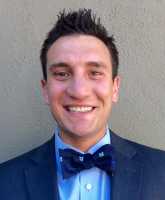Author Interviews, Biomarkers, Brain Injury, Johns Hopkins / 09.08.2015
Blood Biomarker Can Identify Patients At Risk of Continued Symptoms After Traumatic Brain Injury
 MedicalResearch.com Interview with:
Frederick Korley MD Ph.D
Johns Hopkins University School of Medicine
Emergency Medicine
Baltimore, Maryland
Medical Research: What is the background for this study?
Dr. Korley: Each year, millions of Americans are evaluated in emergency departments for traumatic brain injuries. Currently the only test available for diagnosing traumatic brain injury is a brain CT scan. Brain CT scans accurately identify bleeding in the brain from trauma. However, they are unable to identify damage to brain cells. Approximately 90% of patients with traumatic brain injury have no bleeding in the brain and therefore have unremarkable brain CT scans. However, these patients typically have damaged brain cells and they continue to suffer headaches, dizziness, attention and memory deficits, sleep problems among others for months after their injury and can’t figure out why. Therefore new tests are needed to identify traumatic brain injury patients with damaged brain cells and especially those who are likely to have persistent traumatic brain injury-related symptoms for months after injury. If you or any one in your family has sustained a brain injury in an accident, you might want to get in touch someone similar to this Personal Injury Lawyer St. Louis or a law firm more local to your area, who might be able to look into your case.
Medical Research: What are the main findings?
Dr. Korley: Our study determined that the blood levels of a protein called brain derived neurotrophic factor (BDNF) can help predict whether a patient will continue to have symptoms related to traumatic brain injury at six 6 months after injury, even if they had an unremarkable brain CT scan.
(more…)
MedicalResearch.com Interview with:
Frederick Korley MD Ph.D
Johns Hopkins University School of Medicine
Emergency Medicine
Baltimore, Maryland
Medical Research: What is the background for this study?
Dr. Korley: Each year, millions of Americans are evaluated in emergency departments for traumatic brain injuries. Currently the only test available for diagnosing traumatic brain injury is a brain CT scan. Brain CT scans accurately identify bleeding in the brain from trauma. However, they are unable to identify damage to brain cells. Approximately 90% of patients with traumatic brain injury have no bleeding in the brain and therefore have unremarkable brain CT scans. However, these patients typically have damaged brain cells and they continue to suffer headaches, dizziness, attention and memory deficits, sleep problems among others for months after their injury and can’t figure out why. Therefore new tests are needed to identify traumatic brain injury patients with damaged brain cells and especially those who are likely to have persistent traumatic brain injury-related symptoms for months after injury. If you or any one in your family has sustained a brain injury in an accident, you might want to get in touch someone similar to this Personal Injury Lawyer St. Louis or a law firm more local to your area, who might be able to look into your case.
Medical Research: What are the main findings?
Dr. Korley: Our study determined that the blood levels of a protein called brain derived neurotrophic factor (BDNF) can help predict whether a patient will continue to have symptoms related to traumatic brain injury at six 6 months after injury, even if they had an unremarkable brain CT scan.
(more…)
























